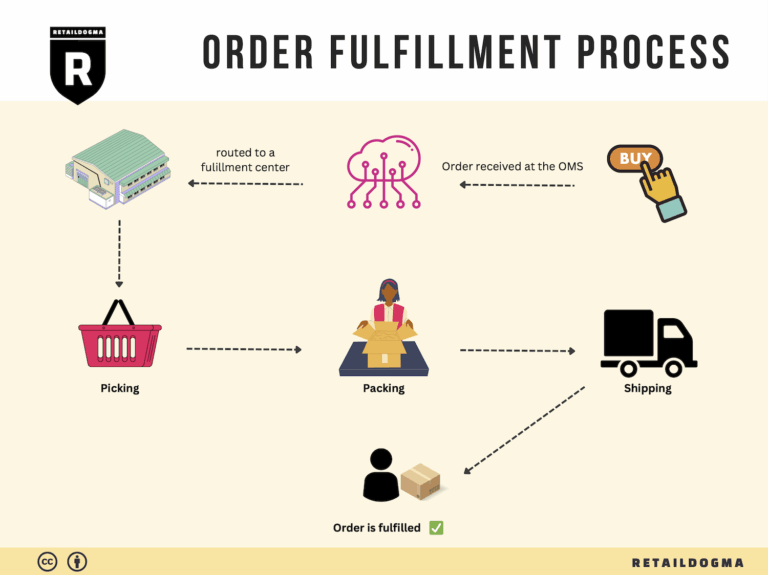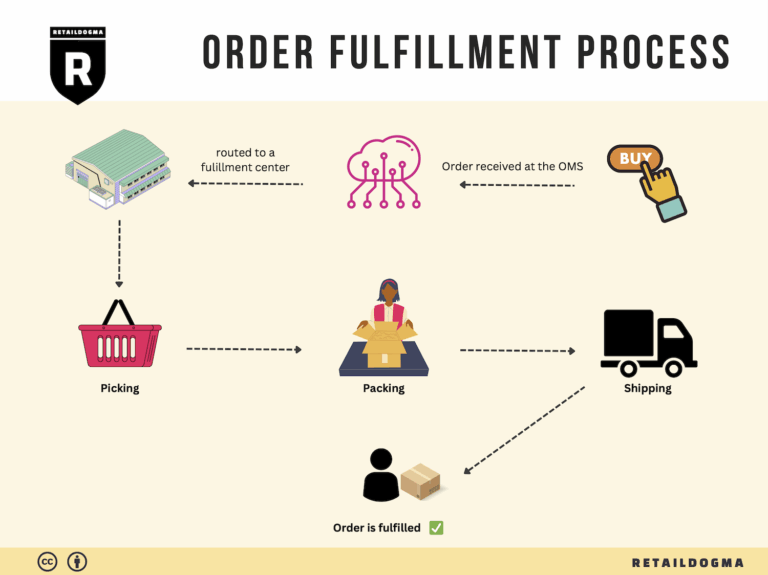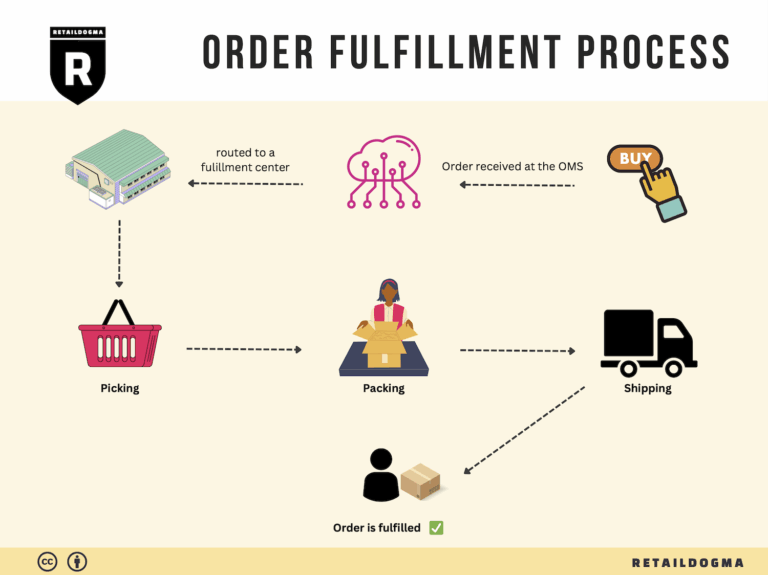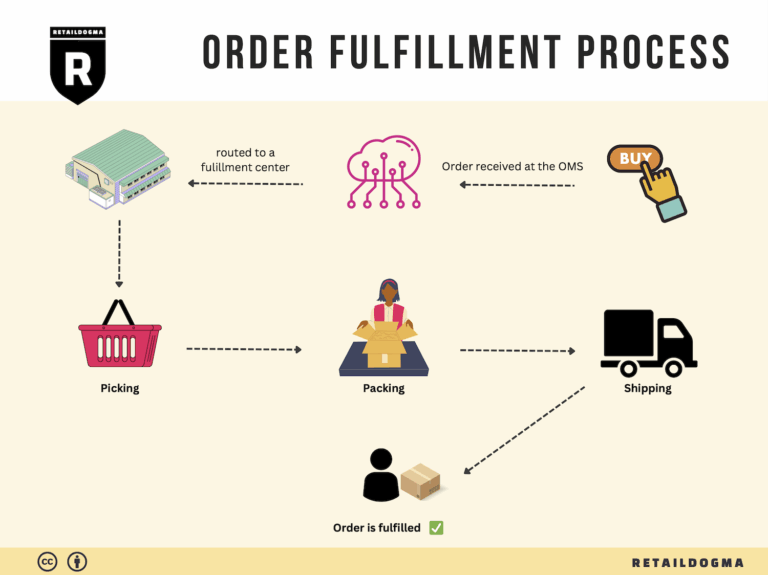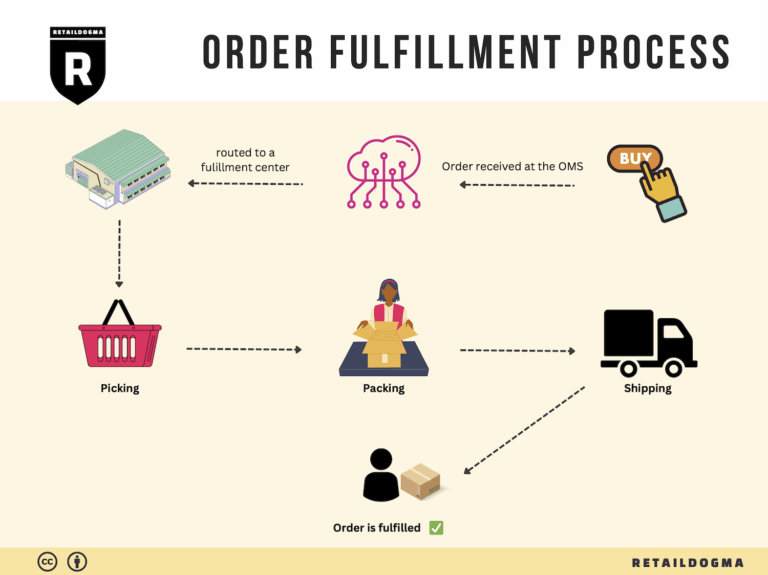Ecommerce Fulfillment Services: The Ultimate Guide (2025)
What is E-commerce Fulfillment? An Introduction for Growing Businesses
As an e-commerce business grows, one of the most pressing challenges faced by owners and operations managers is the overwhelming task of packing and shipping orders. The excitement of increasing sales can quickly turn into stress when the logistics of fulfillment become too complex to manage efficiently. This is where understanding e-commerce fulfillment becomes crucial.
Fulfillment, in simple terms, is the process of getting a product from your inventory to your customer’s doorstep. It encompasses everything from receiving and storing inventory to picking, packing, and shipping orders. For growing online businesses, having a solid fulfillment strategy can mean the difference between success and stagnation. The right fulfillment model can streamline operations, reduce costs, and ultimately enhance customer satisfaction.
In this guide, we will explore various fulfillment models, including Third-Party Logistics (3PL) and Fulfillment by Amazon (FBA). Each model offers unique benefits and considerations, and understanding these differences will help you make informed decisions. We will delve into the core services associated with fulfillment, such as inventory management, order processing, and shipping options.
Choosing the right fulfillment partner is a critical step in scaling your e-commerce business. We will provide insights on what to look for in a partner, including reliability, technology integration, and customer service. Additionally, we will discuss pricing structures, helping you understand how to evaluate costs and find the best value for your specific needs.
Ultimately, this guide aims to empower businesses to make smart decisions about their logistics. By simplifying the complexities of e-commerce fulfillment, we hope to equip you with the knowledge and tools necessary to enhance your operational efficiency, improve customer experiences, and foster sustainable growth. Whether you’re just starting out or looking to optimize your existing processes, understanding fulfillment is key to navigating the evolving landscape of e-commerce successfully.
What You’ll Learn In This Guide
- What is E-commerce Fulfillment? An Introduction for Growing Businesses
- The Order Fulfillment Process: From ‘Buy’ Button to Customer’s Door
- Comparing Fulfillment Models: In-House vs. 3PL vs. Dropshipping
- A Deep Dive into Amazon FBA: Pros, Cons, and Who It’s For
- Core Services Offered by Fulfillment Centers
- How to Choose a Fulfillment Partner: A 6-Point Checklist
- Understanding Fulfillment Pricing: A Breakdown of Common Fees
- Frequently Asked Questions (FAQs) about Fulfillment
- Conclusion: Is Outsourcing Fulfillment the Right Move for Your Business?
- Important Disclaimer
The Order Fulfillment Process: From ‘Buy’ Button to Customer’s Door
1. Receiving Inventory
The order fulfillment process begins with receiving inventory at the fulfillment center. When goods arrive, they must be carefully checked against the purchase order to ensure accuracy in quantity and quality. This step is crucial because any discrepancies can lead to inventory shortages or overages, which can disrupt the entire supply chain.
During the receiving process, items are assigned Stock Keeping Units (SKUs) for efficient tracking. Each SKU is a unique identifier that allows for easy inventory management. Properly receiving inventory not only helps maintain accurate stock levels but also lays the groundwork for effective order processing.
2. Warehouse Storage
Once the inventory is received and verified, the next step is warehouse storage. Efficient storage solutions are vital for maximizing space and minimizing retrieval times. Products are organized based on various criteria, such as size, weight, or sales velocity, which can significantly affect picking efficiency later.
In this phase, understanding the concept of “bin locations” is essential. A bin location refers to the specific area within the warehouse where a product is stored. By utilizing a systematic storage method, businesses can enhance their inventory turnover and reduce the time spent locating items during order fulfillment.
3. Order Picking
With inventory stored, the next step is order picking, where items are retrieved based on customer orders. This step is vital because the speed and accuracy of picking directly impact customer satisfaction. The most common method for facilitating order picking is using “pick lists,” which are generated for each order, outlining the items and their respective bin locations.
Implementing efficient picking strategies, such as batch picking or zone picking, can optimize the process further. Batch picking involves collecting multiple orders simultaneously, while zone picking divides the warehouse into sections, with pickers assigned to specific areas. By optimizing order picking, businesses can reduce lead times and improve order accuracy.
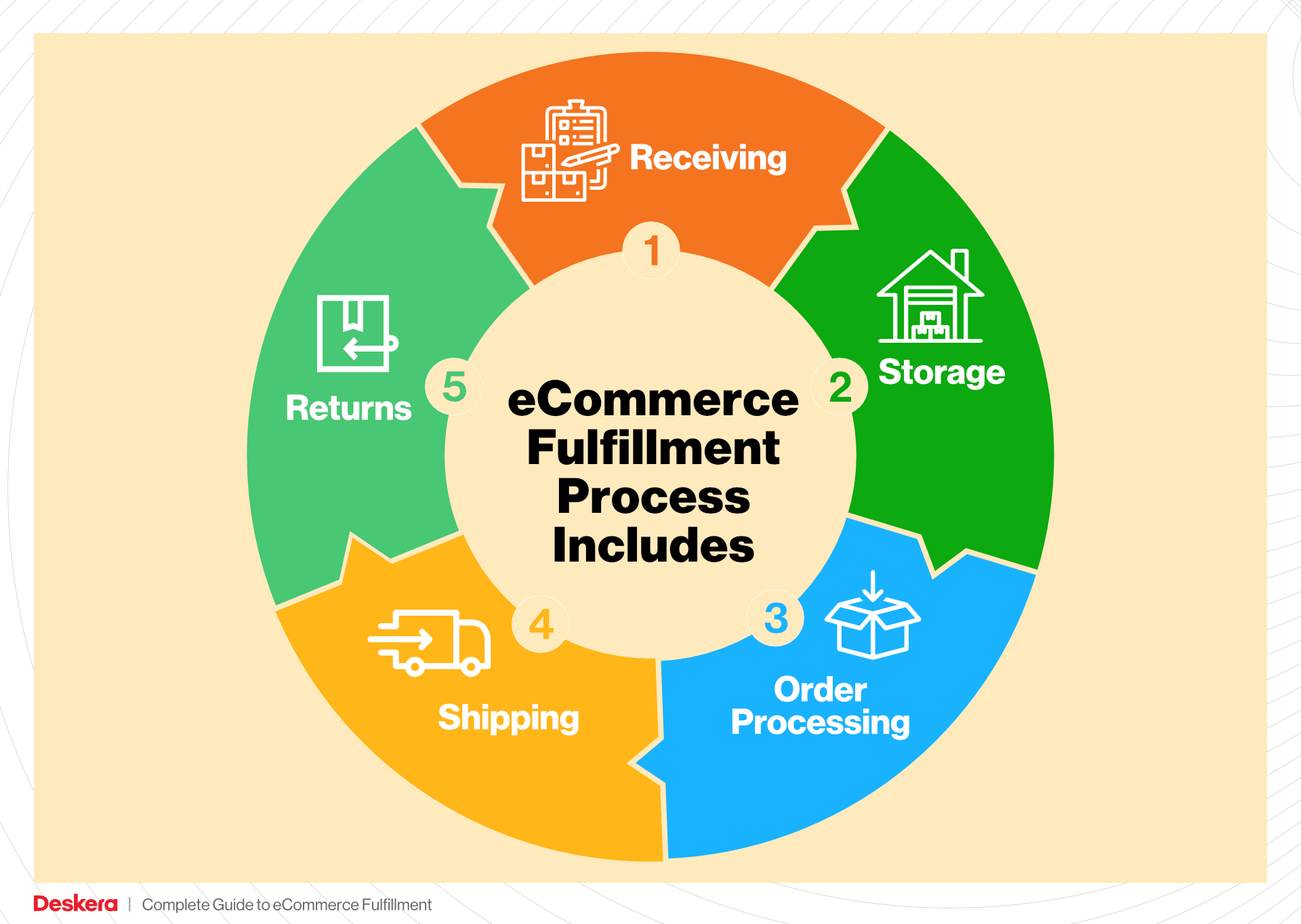
4. Order Packing
After items are picked, they move to the packing stage. Here, products are prepared for shipment, which includes verifying items against the order and packaging them securely. This step is crucial as it ensures that products arrive at their destination in good condition.
Using “packing slips,” which detail the contents of each package, helps maintain accuracy during this stage. Additionally, businesses must consider packaging materials that protect items during transit while also being cost-effective. Efficient packing not only minimizes damages and returns but also contributes to a positive customer experience.
5. Shipping & Delivery
The final step in the order fulfillment process is shipping and delivery. Once orders are packed, they are labeled and dispatched to the appropriate carriers for delivery. The choice of shipping method can affect delivery times and costs, making it essential for businesses to evaluate options based on customer needs and budget constraints.
Tracking shipments is a key term associated with this phase. Providing customers with tracking information enhances transparency and builds trust. Additionally, businesses should analyze shipping performance metrics to identify areas for improvement. Efficient shipping and delivery processes are critical for customer satisfaction, as they directly influence the overall buying experience.
In conclusion, understanding and optimizing each step of the order fulfillment process is vital for e-commerce businesses. By focusing on efficient inventory receiving, strategic warehouse storage, accurate order picking, careful packing, and reliable shipping, companies can enhance their operational efficiency and scale effectively.
Comparing Fulfillment Models: In-House vs. 3PL vs. Dropshipping
Fulfillment Model Comparison
| Model | Who Handles Inventory | Best For (Business Stage) | Key Advantage | Key Disadvantage |
|---|---|---|---|---|
| In-House Fulfillment | The business itself | Startups to established brands | Greater control over inventory & processes | Higher overhead costs & resource-intensive |
| Third-Party Logistics (3PL) | Third-party logistics provider | Growing businesses | Scalability & reduced operational burden | Less control over inventory management |
| Dropshipping | Supplier or manufacturer | New businesses or niche markets | Low upfront investment & risk | Lower profit margins & reliance on suppliers |
In-House Fulfillment
In-house fulfillment involves managing all aspects of inventory storage, order processing, and shipping within the company itself. This model is often favored by startups and established brands that desire complete control over their inventory and fulfillment processes. With in-house fulfillment, businesses can tailor their operations to match their specific needs, ensuring that inventory is managed according to their standards. A significant advantage of this model is the ability to maintain quality control and brand consistency, as companies can oversee every aspect of the order fulfillment process. However, this approach comes with notable downsides, including higher overhead costs due to warehousing, staffing, and technology investments. As businesses scale, the operational demands may become resource-intensive, requiring careful planning and potential reevaluation of fulfillment strategies.
Third-Party Logistics (3PL)
Third-party logistics (3PL) providers handle various aspects of the supply chain, including inventory management, warehousing, and shipping. This model is particularly advantageous for growing businesses that seek to scale operations without the burden of managing logistics internally. By partnering with a 3PL, companies can benefit from the provider’s expertise, technology, and network, allowing them to focus on core business activities such as marketing and sales. A key advantage of using a 3PL is the scalability it offers; businesses can easily adjust their fulfillment needs as demand fluctuates. However, a downside is the potential loss of control over inventory management and customer experience, as the fulfillment process is outsourced to an external entity. Businesses must carefully select a 3PL partner that aligns with their operational goals and can meet their service level expectations to mitigate these risks.
Dropshipping
Dropshipping is a fulfillment model where the retailer does not keep products in stock but instead transfers customer orders directly to a supplier, who then ships the products to the customer. This model is ideal for new businesses or niche markets that want to minimize their upfront investment and financial risk. The key advantage of dropshipping lies in its low barrier to entry; entrepreneurs can start an e-commerce business without needing to invest in inventory, warehousing, or fulfillment infrastructure. However, dropshipping presents challenges, including lower profit margins due to the reliance on suppliers and potential delays in shipping, which can negatively impact customer satisfaction. Additionally, businesses may face challenges in maintaining brand consistency and quality control, as they have limited oversight of the fulfillment process. As such, while dropshipping can be a viable entry point into e-commerce, it requires careful supplier selection and management to ensure a successful operation.
Conclusion
Choosing the right fulfillment model is crucial for the success and scalability of an e-commerce business. Each model—whether in-house fulfillment, third-party logistics, or dropshipping—offers distinct advantages and disadvantages that cater to different business stages and operational needs. By understanding the implications of each model, business owners can make informed decisions that align with their strategic goals and customer expectations. As your business grows and evolves, it may be beneficial to reassess your fulfillment strategy to ensure it continues to support your objectives effectively.
A Deep Dive into Amazon FBA: Pros, Cons, and Who It’s For
Understanding Fulfillment by Amazon (FBA)
Fulfillment by Amazon (FBA) is a service that allows e-commerce sellers to store their products in Amazon’s fulfillment centers. Amazon takes care of storage, packaging, and shipping of products to customers. This service enables sellers to leverage Amazon’s vast distribution network and customer base, making it an attractive option for businesses looking to scale their operations.
How FBA Works
-
Product Preparation: Sellers prepare their products according to Amazon’s guidelines, which may include labeling, packaging, and ensuring products are ready for shipment.
-
Shipping to Amazon: Sellers send their inventory to one or more of Amazon’s fulfillment centers. Amazon provides shipping plans to help sellers determine where to send their products.
-
Storage: Once received, products are stored in Amazon’s warehouses. Sellers can track inventory levels through their Amazon Seller Central account.
-
Order Fulfillment: When a customer places an order for a product, Amazon picks, packs, and ships the product on behalf of the seller. This includes handling returns and customer service inquiries.
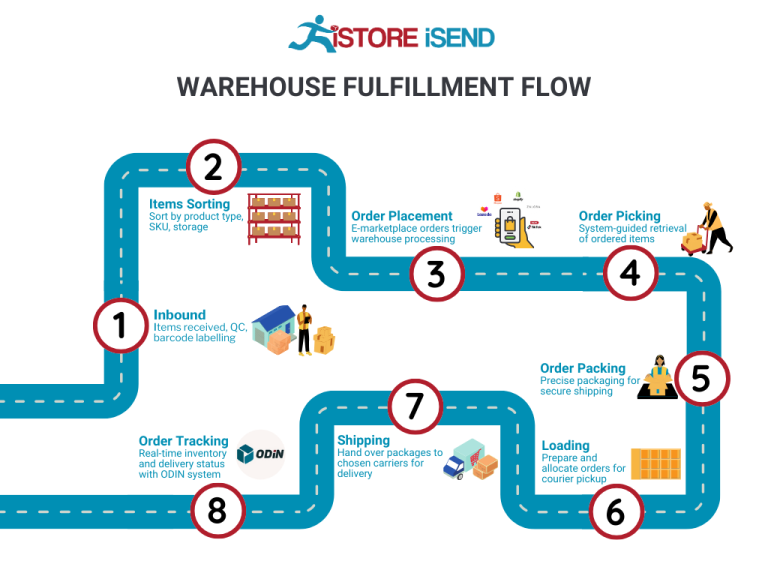
-
Payment: After the sale is completed, Amazon deposits the proceeds (minus fees) into the seller’s account, typically every two weeks.
Pros of FBA
-
Prime Eligibility: Products fulfilled by Amazon are eligible for Amazon Prime, which can significantly increase visibility and sales, as Prime members tend to prefer products that offer fast, free shipping.
-
Enhanced Customer Trust: Customers often trust Amazon’s fulfillment process, leading to higher conversion rates. The Amazon brand carries a reputation for reliability, which can enhance a seller’s credibility.
-
Multi-Channel Fulfillment: FBA allows sellers to fulfill orders not only from Amazon but also from their own websites or other marketplaces. This multi-channel approach can streamline logistics and improve overall efficiency.
-
Scalability: FBA enables sellers to scale their operations without the need for significant investments in warehousing and logistics infrastructure. As demand grows, sellers can simply send more inventory to Amazon.
-
Time Savings: By outsourcing logistics to Amazon, sellers can focus on other aspects of their business, such as marketing and product development, rather than managing shipping and fulfillment.
-
Access to Advanced Tools: Amazon provides sellers with various tools and analytics to help manage inventory, forecast demand, and optimize listings, allowing for better decision-making.
Cons of FBA
-
High Fees: FBA comes with various fees, including storage fees, fulfillment fees, and additional charges for long-term storage. These can significantly cut into profit margins, especially for low-cost items.
-
Strict Inventory Rules: Amazon has stringent inventory management policies, including limits on how much inventory can be sent to their warehouses. Sellers must be diligent about managing their stock to avoid excess fees or stockouts.
-
Commingling Risks: FBA operates on a commingled inventory model, where products from different sellers are stored together. This can pose risks if a customer returns a product that is defective or damaged, as it may affect the seller’s reputation and performance metrics.
-
Loss of Control: By utilizing FBA, sellers relinquish control over the fulfillment process. This can lead to issues with packaging, handling, and customer service that may not align with the seller’s brand image.
-
Long-Term Storage Fees: If products remain in an Amazon warehouse for over 365 days, sellers incur long-term storage fees, which can further diminish profitability.
-
Potential for Account Suspension: FBA sellers must adhere to Amazon’s policies and guidelines strictly. Failure to comply can lead to account suspension, resulting in lost sales and revenue.
Who is FBA Best For?
Fulfillment by Amazon is particularly beneficial for:
-
Small to Medium-Sized Businesses: Those looking to scale their operations without investing heavily in logistics can benefit from the infrastructure that FBA provides.
-
Brands Seeking to Increase Visibility: Companies that want to leverage Amazon’s massive customer base and Prime membership can gain significant exposure through FBA.
-
E-commerce Entrepreneurs: Startups and entrepreneurs who want to focus on product development and marketing rather than fulfillment logistics will find FBA an efficient solution.
-
Sellers with Seasonal Products: FBA is ideal for sellers who experience fluctuating demand, as they can send inventory to Amazon during peak seasons without the worry of managing fulfillment.
-
Multi-Channel Retailers: Businesses that sell on multiple platforms (e.g., their website, eBay, etc.) can streamline their operations by using FBA for all their fulfillment needs.
In conclusion, while Fulfillment by Amazon offers numerous advantages, such as increased visibility, customer trust, and efficiency, it is essential for sellers to weigh these benefits against the potential downsides, including costs and control. Understanding these factors will help businesses make informed decisions on whether FBA aligns with their operational strategy and growth objectives.
Core Services Offered by Fulfillment Centers
Inventory Management & Warehousing
Inventory management and warehousing are foundational services offered by fulfillment centers that enable e-commerce businesses to maintain optimal stock levels while minimizing costs. This service involves the systematic tracking of inventory quantities, locations, and conditions, ensuring that products are readily available when needed.
Fulfillment centers utilize sophisticated inventory management systems that provide real-time data on stock levels, sales trends, and reordering needs. This allows businesses to make informed decisions about purchasing and stocking, reducing the risks of overstocking or stockouts.
The benefits of effective inventory management include:
- Cost Efficiency: By avoiding overstocking, businesses can save on storage costs and minimize the risk of unsold inventory becoming obsolete.
- Improved Cash Flow: Efficient inventory management helps free up cash that would otherwise be tied up in excess inventory, allowing businesses to invest in other growth areas.
- Enhanced Customer Satisfaction: Accurate stock levels lead to better order fulfillment rates, ensuring that customers receive their products on time, which is crucial for maintaining a positive brand reputation.
Pick and Pack Services
Pick and pack services refer to the process of selecting products from inventory (picking) and preparing them for shipment (packing). Fulfillment centers streamline this process through efficient workflows that minimize errors and speed up order processing.
When an order is received, fulfillment center staff pick the items from their designated storage locations and pack them according to specific guidelines, often including branded packaging, protective materials, and shipping labels.
The advantages of utilizing pick and pack services include:
- Increased Efficiency: Fulfillment centers employ advanced technology and trained personnel to speed up the picking and packing processes, allowing businesses to fulfill more orders in less time.
- Error Reduction: With established systems and checks in place, the likelihood of errors during order fulfillment decreases significantly, which is vital for maintaining customer trust.
- Scalability: As businesses grow, fulfillment centers can easily adapt to increased order volumes without the need for significant capital investment in staffing or equipment.
Kitting and Assembly
Kitting and assembly involve grouping multiple products together into a single package or preparing components for a final product. This service is particularly beneficial for businesses that sell bundled products, promotional items, or customized orders.
Fulfillment centers can manage the kitting process by assembling products according to specific customer requirements or marketing strategies. For instance, a company might offer a gift set that includes several items packaged together.
The benefits of kitting and assembly services include:
- Simplified Order Management: By outsourcing kitting and assembly, businesses can streamline their operations and focus on core activities such as marketing and sales.
- Enhanced Product Offerings: Kitting allows businesses to create unique product combinations that can attract more customers and drive sales.
- Cost Savings: Outsourcing these processes can be more cost-effective than managing them in-house, especially for small to medium-sized businesses that may lack the necessary infrastructure.
Returns Management (Reverse Logistics)
Returns management, also known as reverse logistics, is the process of handling returned products efficiently and effectively. Fulfillment centers play a crucial role in managing returns by inspecting, restocking, or disposing of returned items based on the company’s policies.
This service is essential for e-commerce businesses, as the return rate can be significantly higher in online retail compared to traditional retail. Fulfillment centers can handle the logistics of returns, ensuring that the process is seamless for both the business and the customer.
The benefits of a robust returns management system include:
- Customer Retention: An efficient returns process can enhance customer satisfaction and loyalty, as customers appreciate hassle-free returns and exchanges.
- Cost Management: By managing returns effectively, businesses can minimize losses associated with returned inventory and ensure that products are quickly returned to stock or properly disposed of.
- Data Insights: Fulfillment centers can provide valuable insights into return trends, helping businesses identify potential issues with product quality or customer expectations, which can inform future product development and marketing strategies.
In summary, leveraging the core services offered by fulfillment centers—inventory management and warehousing, pick and pack services, kitting and assembly, and returns management—can significantly enhance operational efficiency and customer satisfaction for e-commerce businesses. As businesses scale, partnering with a fulfillment center can provide the necessary support to navigate the complexities of logistics and order fulfillment, allowing them to focus on growth and innovation.
How to Choose a Fulfillment Partner: A 6-Point Checklist
Location & Warehouse Network
Importance:
The location of your fulfillment partner’s warehouses can significantly impact shipping times and costs. A strategically placed network of warehouses allows for faster delivery to your customers, reducing shipping costs and improving customer satisfaction.
Questions to Ask:
– What is the geographic footprint of your warehouses?
– How many fulfillment centers do you operate, and where are they located?
– Can you provide insights into your average shipping times for key regions?
– Do you have the ability to expand your warehouse network based on our needs?
Technology & Integrations
Importance:
In today’s e-commerce landscape, technology plays a crucial role in ensuring efficient order processing and inventory management. A fulfillment partner with advanced technology can provide real-time tracking, automated order processing, and seamless integration with your existing systems.
Questions to Ask:
– What technology platforms do you use for inventory management and order fulfillment?
– Can your system integrate with our e-commerce platform (e.g., Shopify, Amazon, WooCommerce)?
– Do you offer real-time inventory tracking and reporting?
– How do you handle system updates and maintenance?
Specializations (e.g., Cold Storage, Oversized Items)
Importance:
Different products have unique storage and handling requirements. If your business involves specific items such as perishables, oversized goods, or hazardous materials, you need a fulfillment partner with the right expertise and facilities.
Questions to Ask:
– What types of specializations do you offer (e.g., cold storage, hazardous materials, bulky items)?
– How do you ensure compliance with industry regulations for specialized items?
– Can you accommodate seasonal fluctuations in demand for specialized products?
– What measures do you have in place to maintain product quality for sensitive items?
Scalability & Capacity
Importance:
As your business grows, your fulfillment needs will evolve. Choosing a partner that can scale with you is essential for long-term success. A flexible partner can adjust to your changing inventory levels, seasonal spikes, or new product launches without compromising service quality.
Questions to Ask:
– How do you handle fluctuations in order volume?
– What is your capacity for scaling operations up or down?
– Can you accommodate our growth projections over the next few years?
– Do you have contingency plans in place for unexpected surges in demand?
Pricing and Contracts
Importance:
Understanding the pricing structure and contractual obligations of your fulfillment partner is crucial to maintaining profitability. Transparent pricing can help you avoid hidden fees and unexpected costs that can erode your margins.
Questions to Ask:
– What is your pricing model (e.g., per order, per item, monthly fees)?
– Are there any additional fees for services such as storage, packaging, or returns?
– Can you provide a detailed breakdown of all potential costs?
– What are the terms for contract renewal or cancellation?
Customer Support & Reviews
Importance:
Reliable customer support can make a significant difference in how smoothly your operations run. A responsive partner can resolve issues quickly, ensuring minimal disruption to your business. Additionally, reviews and testimonials can provide valuable insights into a partner’s reliability and service quality.
Questions to Ask:
– What customer support channels do you offer (e.g., phone, email, chat)?
– What are your average response times for support inquiries?
– Can you provide references or case studies from other clients in our industry?
– How do you handle order errors or customer complaints?
Conclusion
Choosing the right fulfillment partner is a critical decision for scaling your e-commerce business. By using this checklist, you can evaluate potential partners effectively, ensuring they align with your operational needs and growth objectives. Prioritizing these factors will not only enhance your logistics efficiency but also contribute to improved customer satisfaction and business success.
Understanding Fulfillment Pricing: A Breakdown of Common Fees
Initial Setup Fees
When you begin using Amazon’s fulfillment services, an initial setup fee may be required. This fee typically covers the cost of creating your account, integrating your inventory management system, and setting up your products within Amazon’s Fulfillment by Amazon (FBA) platform. The setup fee can vary depending on the complexity of your product listings and the volume of items you plan to send to the warehouse.
To calculate this fee, consider the following factors:
– Account Type: Different types of seller accounts (individual vs. professional) may have varying setup costs.
– Integration Requirements: If you need custom integration with existing systems, additional consulting or development fees might apply.
Receiving Fees
Receiving fees are charged for the process of accepting and processing your inventory when it arrives at the fulfillment center. This fee covers the labor involved in unloading, inspecting, and shelving your products.
The calculation of receiving fees generally depends on:
– Volume of Inventory: The more items you send, the higher the receiving fee, as it is often charged per unit or per pallet.
– Preparation Requirements: If your items require special handling (e.g., labeling, bundling), additional charges may apply.
Storage Fees (per pallet/bin)
Storage fees are recurring charges for keeping your inventory in Amazon’s fulfillment centers. These fees are calculated based on the amount of space your products occupy, typically measured in cubic feet or pallets. Amazon assesses storage fees on a monthly basis, with variations based on the time of year.
Key considerations for storage fees include:
– Monthly Rates: Standard monthly storage rates apply, with increased rates during peak seasons (October to December).
– Long-Term Storage Fees: If your products remain in the warehouse for over 365 days, additional long-term storage fees may be incurred, calculated based on the volume of inventory.
Pick & Pack Fees (per item/order)
Pick and pack fees are charged for the process of selecting items from inventory and packaging them for shipment to customers. This fee is generally charged per unit picked and packed, and it varies based on the size and weight of the item.
To understand how these fees are structured:
– Item Size and Weight: Larger or heavier items may incur higher pick and pack fees compared to smaller, lighter products.
– Order Complexity: Orders with multiple items may also result in increased fees, as each item has to be picked, packed, and labeled separately.
Shipping Fees
Shipping fees are the costs associated with sending products from the fulfillment center to the customer. Amazon typically charges shipping fees based on the destination, weight, and dimensions of the package.
When evaluating shipping fees, consider:
– Shipping Method: Different shipping options (standard, expedited, etc.) will have varying costs.
– Destination: Shipping to remote areas or international destinations can significantly increase shipping costs.
– Weight and Dimensions: Heavier and larger packages will incur higher shipping fees based on dimensional weight pricing.
Tips for Getting an Accurate Quote
To ensure you receive a precise quote for fulfillment services, consider the following strategies:
-
Detail Your Inventory: Provide comprehensive information about the types and quantities of products you plan to store and ship. This includes dimensions, weight, and any special handling requirements.
-
Understand Your Needs: Clearly outline your operational requirements, such as anticipated order volume and seasonal fluctuations, to help providers tailor their services and pricing.
-
Request Itemized Quotes: Ask for a breakdown of all potential fees, including setup, receiving, storage, pick and pack, and shipping, to understand the full scope of costs involved.
-
Compare Multiple Providers: Don’t settle for the first quote. Compare several fulfillment centers to find the best combination of services and pricing that suits your business needs.
-
Negotiate Terms: Many fulfillment centers are willing to negotiate pricing, especially for high-volume accounts. Be prepared to discuss your expected growth and how you can increase your order volume over time.
By understanding these common fees and strategies for obtaining accurate quotes, you can better manage your fulfillment costs and make informed decisions as you scale your e-commerce business.
Frequently Asked Questions (FAQs) about Fulfillment
1. What is Amazon Fulfillment Center WBW2?
Amazon Fulfillment Center WBW2 is a specific warehouse located at 1300 Corporate Way, Olyphant, PA 18447, USA. It is part of Amazon’s Fulfillment by Amazon (FBA) network, where sellers can store their products, and Amazon handles the logistics of storage, packing, and shipping to customers.
2. How does WBW2 fit into the Amazon FBA network?
WBW2 serves as one of the many fulfillment centers in Amazon’s extensive network. It facilitates efficient order processing for sellers by storing their inventory and enabling quick shipping to customers across various regions, thereby improving delivery speed and customer satisfaction.
3. What services does Amazon Fulfillment Center WBW2 provide?
WBW2 offers a range of services under the FBA program, including inventory storage, order picking and packing, shipping directly to customers, and returns processing. This allows sellers to focus on marketing and sales while Amazon manages logistics.
4. What’s the difference between a warehouse and a fulfillment center?
A warehouse primarily focuses on storing goods until they are needed, while a fulfillment center is designed to efficiently process customer orders. Fulfillment centers handle inventory management, order processing, packing, and shipping, which are critical for e-commerce operations.
5. How much do fulfillment services cost at WBW2?
Fulfillment service costs can vary based on factors like storage space used, the number of orders processed, and additional services required (such as returns handling). Typically, Amazon charges a monthly storage fee and a fulfillment fee per item shipped. It is advisable to review Amazon’s current fee structure for precise costs.
6. What is a 3PL (Third-Party Logistics)?
A 3PL provider offers logistics services that include warehousing, order fulfillment, and shipping. Unlike Amazon FBA, which is tied to the Amazon ecosystem, a 3PL can serve multiple e-commerce platforms, providing flexibility for sellers who sell on various marketplaces.
7. How can I send my inventory to WBW2?
To send inventory to WBW2, sellers must create a shipment plan within their Amazon Seller Central account. This plan will include details about the products being sent and the quantities. Once the plan is approved, sellers will receive shipping labels and instructions on how to package and send their products to the fulfillment center.
8. What are the benefits of using Amazon FBA at WBW2?
Using FBA at WBW2 provides several advantages, including access to Amazon’s vast customer base, eligibility for Prime shipping, and reduced shipping times. Additionally, sellers can leverage Amazon’s customer service and returns processing, enhancing the overall customer experience.
9. What types of products can I store at WBW2?
Most consumer goods are eligible for storage at WBW2, but there are restrictions on certain categories. Prohibited items may include hazardous materials, perishables, and products that violate Amazon’s policies. Always check the Amazon FBA guidelines for specifics on what can be stored.
10. How do I monitor my inventory levels at WBW2?
Sellers can monitor their inventory levels through the Amazon Seller Central dashboard. This platform provides real-time data on stock levels, sales performance, and alerts for low inventory, allowing sellers to manage their inventory effectively and avoid stockouts.
Conclusion: Is Outsourcing Fulfillment the Right Move for Your Business?
Evaluating the Benefits of Outsourcing Fulfillment
Outsourcing your fulfillment process can significantly impact your e-commerce business, offering several key benefits that can drive your growth. First and foremost, partnering with a fulfillment service saves you valuable time. Managing logistics, inventory, and shipping can be time-consuming and often diverts your attention away from critical business activities such as marketing and customer engagement. By outsourcing, you can focus on scaling your operations and enhancing your product offerings.
Scalability is another crucial advantage. As your business grows, so too does the complexity of your logistics. A proficient fulfillment partner can seamlessly adjust to your changing needs, whether you’re experiencing a seasonal surge in demand or launching new products. This flexibility allows you to scale operations efficiently without the burden of managing additional warehouse space or hiring new staff.
Moreover, leveraging the expertise of a fulfillment service can lead to improved operational efficiencies. These partners typically have established networks, advanced technology, and industry best practices that can enhance your shipping speed and accuracy. This not only boosts customer satisfaction but can also reduce overall shipping costs, allowing you to allocate resources more effectively.
However, the choice of a fulfillment partner is critical to your success. It’s essential to select a provider that aligns with your business goals and can support your growth trajectory.
Take Action Today
To determine if outsourcing fulfillment is the right move for your business, conduct a thorough audit of your current shipping process. Analyze your operational bottlenecks, assess your scalability potential, and evaluate your shipping costs. This exercise can provide valuable insights and help you decide if partnering with a fulfillment service is the next strategic step for your growth. Remember, the right partner can not only streamline your operations but also propel your business to new heights.
Important Disclaimer
⚠️ Important Disclaimer
The information in this guide is for educational purposes. Fulfillment services, pricing, and platform features change frequently. Always conduct your own due diligence and consult with providers directly before making business decisions.

